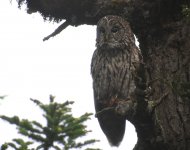mb1848
Well-known member
I think the decision to lump is part of making freinds among the competing bird-lists trying to come up with one global bird list. Sometimes science needs to take a back seat to politics.
https://www.scirp.org/journal/paperinformation.aspx?paperid=111980 .
Genetic connectivity among osprey populations and consequences for conservation: philopatry versus dispersal as key factors - Conservation Genetics .
Working Group Avian Checklists | International Ornithologists' Union .
https://www.scirp.org/journal/paperinformation.aspx?paperid=111980 .
Genetic connectivity among osprey populations and consequences for conservation: philopatry versus dispersal as key factors - Conservation Genetics .
Working Group Avian Checklists | International Ornithologists' Union .










